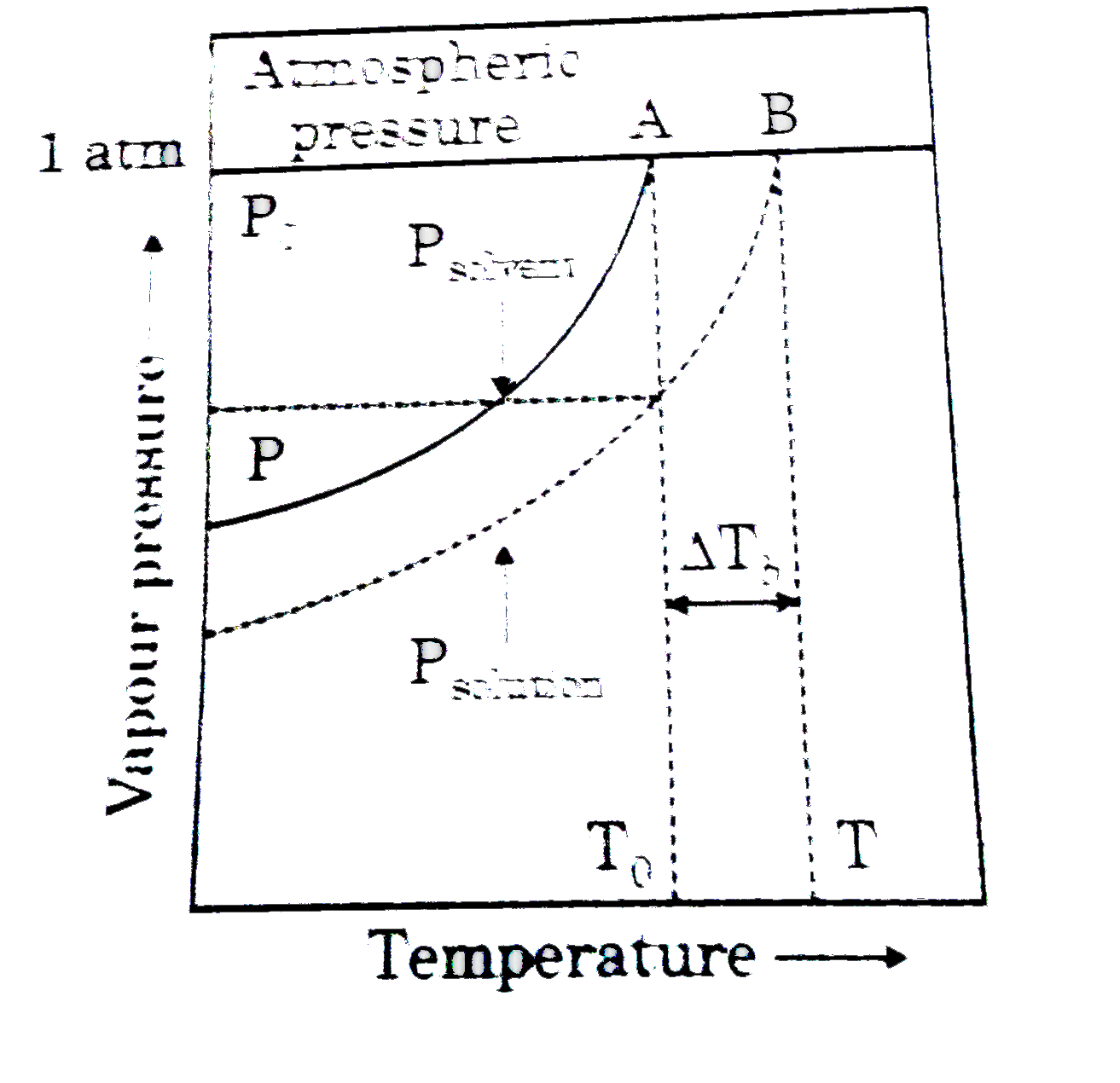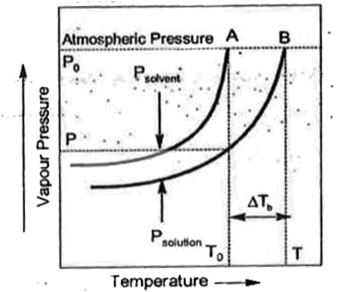If the solution boils at a temperature T1 and solvent at a temperature T2 the elevation of boiling point is given by:
T1+T2
T1−T2
T2−T1
(T1/T2)
The correct Answer is:B
To find the elevation of boiling point when a non-volatile solute is added to a solvent, we can follow these steps:
1. Understand the Concept of Boiling Point Elevation:
- When a non-volatile solute is added to a solvent, the boiling point of the solvent increases. This phenomenon is known as boiling point elevation.
2. Identify the Given Variables:
- Let T1 be the boiling point of the solution.
- Let T2 be the boiling point of the pure solvent.
3. Use the Formula for Boiling Point Elevation:
- The elevation in boiling point (ΔTb) can be expressed as:
ΔTb=T1−T2
- This equation states that the boiling point of the solution (T1) is equal to the boiling point of the pure solvent (T2) plus the elevation in boiling point (ΔTb).
4. Conclusion:
- Therefore, the elevation of boiling point can be calculated as:
ΔTb=T1−T2
Final Answer:
The elevation of boiling point is given by ΔTb=T1−T2.
---
- When a non-volatile solute is added to a solvent, the boiling point of the solvent increases. This phenomenon is known as boiling point elevation.
- Let T1 be the boiling point of the solution.
- Let T2 be the boiling point of the pure solvent.
- The elevation in boiling point (ΔTb) can be expressed as:
ΔTb=T1−T2
- This equation states that the boiling point of the solution (T1) is equal to the boiling point of the pure solvent (T2) plus the elevation in boiling point (ΔTb).
- Therefore, the elevation of boiling point can be calculated as:
ΔTb=T1−T2
The elevation of boiling point is given by ΔTb=T1−T2.
Similar Questions
Knowledge Check
If the solution boils at a temperature T1 and solvent at a temperature T2 the elevation of boiling point is given by:
AT1+T2BT1−T2CT2−T1DT1÷T2If the solution boils at a temperature T1and the solvent at a temperature T2 the elevation ofboiling point is given by
AT1+T2BT1−T2CT2−T1DT1+T2For a dilute solution containing a nonvolatile solute, the molar mass of solute evaluated from the elevation of boiling point is given by the experssion:
AM2=ΔTbKbm1m2BM2=ΔTbKbm2m1CM2=KbΔTbm2m1DM2=KbΔTbm1m2
Boiling point elevation is
View SolutionThe molal elevation constant is the ratio of the elevation in boiling point to :
View SolutionStatement-1 : In binary ideal solution more volatile component boils at less temperature and less volatile component boils lat high temperature than their normal boiling point of pure component.
Statement-2 : For any composition, mixture boils at temperature in between their normal boiling point temperature of pure component.
View SolutionFigure explains elevation in boiling point when a non-volatile solute is added to a solvent. Variation of vapour pressure with temperaure and elevation in boiling point is marked.

Given that ΔTb is the elevation in boiling point of the solvent in a solution of molarity m then limm→0(ΔTbm) is equal to:
View SolutionConsider following figure and answer the questions at the end of it.
Figure explains elevation in boiling point when a non-volatile solute is added to a solvent.

Variation of vapour pressure with temperature and showing elevation in boiling point.
Given that ΔTb is the elevation in boiling point of the solvent in a solution of molality 'm' then Ltm→0(DηlTbm) is equal to
View Solution